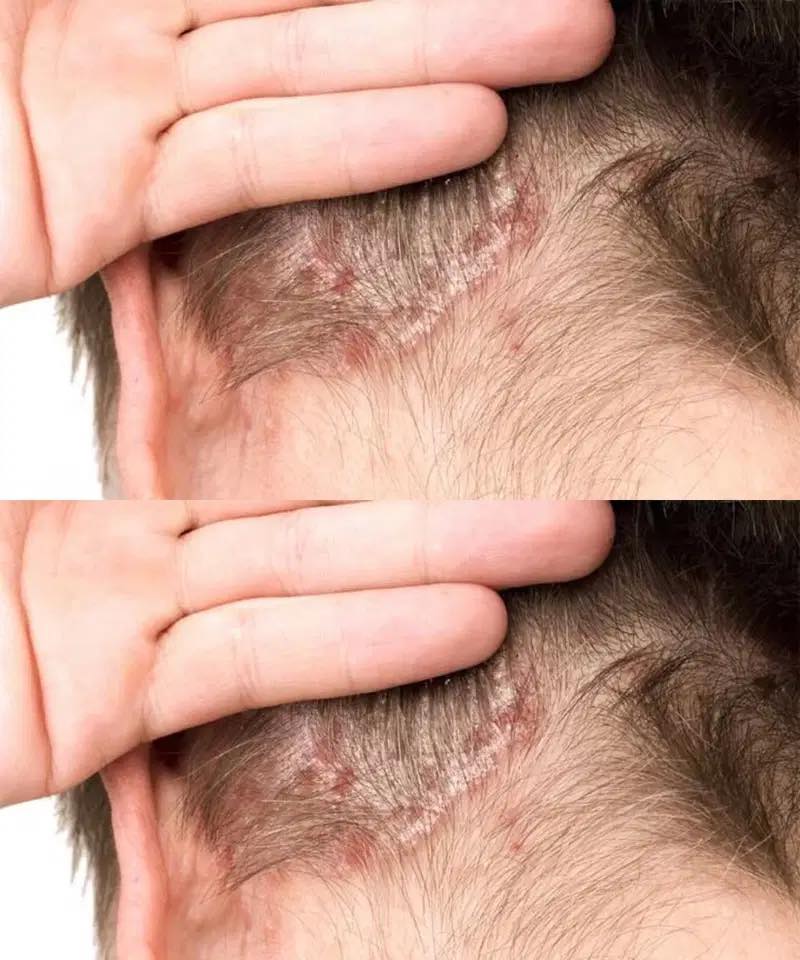Discovering a strange bump or lesion on your child’s scalp can be alarming, especially if scheduling a doctor’s appointment isn’t immediately possible. While professional evaluation is always the safest route, having a clear understanding of common scalp conditions can help you manage mild symptoms at home, recognize warning signs, and decide when urgent medical attention is necessary.
This guide focuses on frequent scalp issues, with a special emphasis on psoriasis vulgaris—a common but often misunderstood disorder. You’ll learn how to identify scalp psoriasis, explore simple home remedies, consider over-the-counter treatments, recognize red flags, and document symptoms effectively for healthcare providers.
1. Understanding Scalp Conditions
The scalp is a sensitive area prone to various problems, ranging from mild dandruff to chronic skin disorders. Genetics, hygiene habits, environmental factors, and infections all influence scalp health. For instance:
Seborrheic dermatitis can cause greasy, yellowish flakes and redness due to yeast overgrowth.
Folliculitis, an infection of hair follicles, leads to red, pus-filled bumps.
Pilar cysts, benign fluid-filled sacs, may occasionally grow large.
Because many scalp conditions can look similar, proper identification is essential for effective treatment.
2. Common Causes of Scalp Bumps
Scalp bumps can originate from several causes:
Seborrheic dermatitis: Yellowish, itchy scales that may be greasy.
Folliculitis: Small, tender, inflamed bumps caused by bacterial or fungal infection.
Pilar cysts: Smooth, firm lumps beneath the scalp.
Psoriasis: A chronic autoimmune condition causing thick, raised, silvery-scaled patches.
Understanding these possibilities helps you narrow down potential causes and take the right steps.
3. Psoriasis Vulgaris 101
Psoriasis vulgaris is the most common form of psoriasis. It occurs when the immune system accelerates skin-cell growth, resulting in red, scaly plaques that can itch or crack. While there is no cure, psoriasis can be managed effectively. Common triggers include:
Genetics
Stress
Infections
Cold or dry weather
Certain medications
Recognizing and avoiding these triggers is key to long-term management.
4. How to Identify Scalp Psoriasis
Typical signs of scalp psoriasis include:
Well-defined red patches covered with silvery-white scales
Plaques that may extend beyond the hairline
Itching, burning, or temporary hair thinning due to scratching
Unlike seborrheic dermatitis, which tends to be greasy and diffuse, psoriasis plaques are thicker and more sharply outlined. Observing these patterns can help determine if psoriasis is the likely cause.
5. Home Remedies for Relief
Several simple strategies can alleviate mild symptoms:
Coconut oil or aloe vera: Moisturizes and softens thick scales when applied for a few hours or overnight.
Diluted apple cider vinegar: May reduce itching due to antiseptic properties.
Controlled sunlight exposure: Can slow rapid skin-cell turnover (avoid burns).
These remedies are supportive rather than curative but can provide noticeable relief.
6. Over-the-Counter Treatments
OTC products can be effective for mild-to-moderate scalp psoriasis:
Coal tar shampoos: Slow skin growth and reduce scaling.
Salicylic acid products: Loosen and remove thick plaques.
Mild corticosteroid creams: Reduce inflammation and itching when used properly.
Always follow instructions and consult a pharmacist if unsure which product is suitable.
7. When to See a Doctor
Seek professional care if:
Symptoms worsen or do not improve after several weeks
Daily activities or sleep are disrupted
Signs of infection appear: spreading redness, pus, fever, or severe pain
A dermatologist can confirm the diagnosis and may recommend prescription treatments such as stronger topical steroids, medicated foams, or light therapy.
8. Managing Scalp Psoriasis at Home
Long-term management requires consistency:
Regular moisturizing reduces scaling and dryness
Use a humidifier to maintain moisture in indoor air
Identify and avoid triggers like stress, harsh hair products, smoking, or certain foods
Keep a symptom diary to track flare-ups
Practice gentle hair care: soft-bristle brushes, loose hairstyles, and avoiding harsh styling
9. Popular Viral Scalp Hacks
Some trending remedies may help when used cautiously:
Tea tree oil: Antifungal and anti-inflammatory properties, can be added sparingly to shampoo
Baking soda paste: Gentle exfoliation to remove dead skin and scales
Always patch-test new treatments and discontinue if irritation occurs.
10. Documenting Symptoms for Your Doctor
Accurate documentation helps your healthcare provider:
Record when symptoms started, intensity, and type of discomfort
Note potential triggers: stress, illness, or new products
Take well-lit photos every few days to track changes
Keeping detailed records ensures your doctor has the full picture, especially if appointments are delayed.
